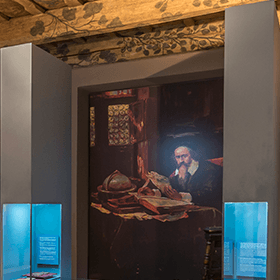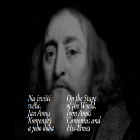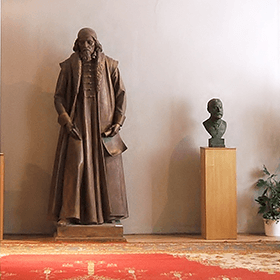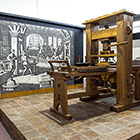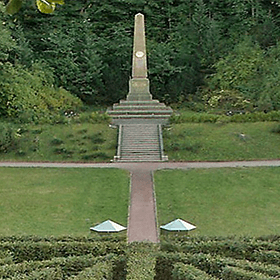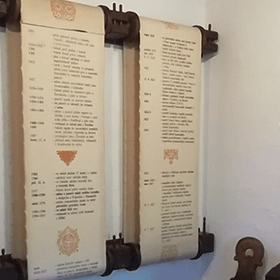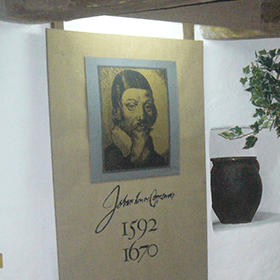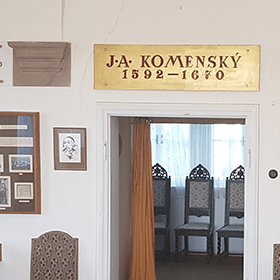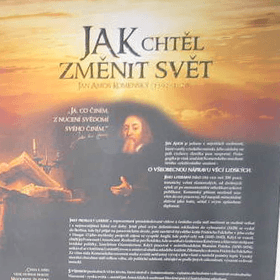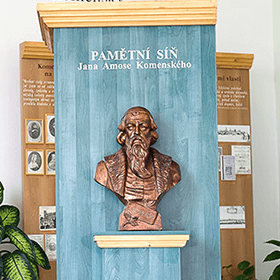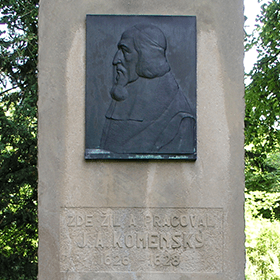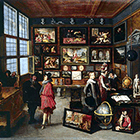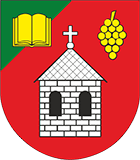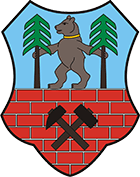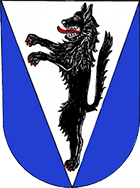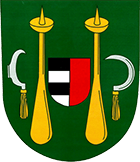Comenius National Pedagogical Museum and Library
The museum devotes itself to the history of Czech education and schools and in addition to short-term thematic exhibitions it offers to visitors an exposition “The Legacy of Comenius. Traditions and Challenges of Czech Scholasticism for Europe”, a part of which summarizes pedagogical ideas of the Teacher of Nations and his legacy for (not only) today’s teachers.
Comenius Museum in Uherský Brod
The museum is one of the Comeniological centers in the Czech Republic. Besides an exposition entitled “Comenius to the Mankind” which, during a festive ceremony, was opened by former Czech president Václav Havel, the museum offers expositions dealing with the history and folk culture of the Uherský Brod region.
Comenius Museum in Přerov
The oldest museum devoted to Jan Amos Comenius was founded in 1888 in Přerov, a town linked with Comenius through his studies in higher Latin school, first pedagogical practice and his first marriage with Mandalena Vizovská. Other expositions here deal with life and work of Comenius, Jan Blahoslav and with the Comeniological traditions. Visitors have a unique chance to visit a replica of a school classroom dating back to the 17th century and nearby Memorial of the Unity of the Brethren, built on the original ground where the Brethren’s house with a school stood. In the town there is also a monument from 1874 with the very first depiction of Comenius as a teacher with a pupil. The museum owns the most complete collection of maps of Moravia made by Comenius which is on display within the framework of short-term exhibitions.
Kralice Bible Memorial in Kralice upon Oslava
A famous printing house of the Union of the Brethren had been placed in Kralice upon Oslava, where the Kralice Bible was printed. After the disastrous battle of the White Mountain the printing house was moved and hidden probably in Náměšť upon Oslava and later on in Přerov, to be finally transported to Leszno. Parts of letter-printers and apparatus were dug in Kralice, and discovered during archeological research conducted in 1956 – 1971. In 1967 – 1969 the Kralice Bible Memorial was built here, reminding of work and life of Jan Amos Comenius.
Comenius Commemoration Hall in Brandýs upon Orlice
In Brandýs upon Orlice, under the protection of Charles the Elder of Žerotín, Comenius wrote his Labyrinth of the World and Paradise of the Heart, considered nowadays one of the key opuses of Czech Baroque literature. He married here, too - his second wife was née Dorota Cyrillová. Today, Comenius Commemoration Hall is open in the building of the Brandýs town-hall. In 1865 a Comenius monument was unveiled here, the first one in the Czech Lands. This event grew into a huge national manifestation, with outstanding personalities of Czech public life present in it – František Palacký, Jan Evangelista Purkyně or Miroslav Tyrš. The original monument has later been complemented by a maze (labyrinth) of an area of 35x35 meters. In its center an object symbolizing the heart is placed. The maze has been inspired by English samples and is composed of hornbeams.
Offer of walks in and around Brandýs nad Orlicí – The path of a wanderer download here.
Comenius Memorial in Fulnek
Comenius lived in this town in 1618 – 1621 and he held here the position of an administrator of the local prayer chapel belonging to the Unity of the Brethren. After his departure the chapel ceased to exist and in the 17th century it turned into a granary, later on into a nobility riding hall and finally into a hospital. The building is closed at present, and after renovation it will again offer an exposition devoted to Comenius. Its opening is planned for 2020.
Comenius Memorial in Komňa
Comenius’ grandfather Jan Segeš was a Reeve of Komňa in the 16th century and some scholars consider this village the birthplace of the Teacher of Nations. The memorial was established in the protected historical granary in 1992 and in addition to Comenius’ personality it reveals the history of this municipality.
Comenius memorial in Horní Branná
In the local chateau Comenius met his future foster child Kristina Poniatowska whose prophetical visions he wrote down. He lived here for the last several days of life in his native country before he left - with a group of Czech Brethren companions – to Polish exile. That’s why a small memorial was set up inside the local Renaissance chateau.
Municipal Museum Strážnice
In Strážnice orphaned Comenius spent the whole year 1604 and part of 1605 at his aunt Zuzana and her husband. He went to school here and met Mikuláš Drabík, who later became famous due to his visions, which Comenius used in his book Lux in tenebris (Light in darkness). Today, Memorial of the Brethren Education shows the foundations of the prayer chapel, school and hospital. A Comenius statue by Miroslav Hudeček and a plaque placed on the site where Comenius’ aunt Zuzana’s house stood (in today’s Skalická street) are also to be seen here. A part of Municipal Museum’s exposition is devoted to Brethren education.
Comenius Commemoration Hall in the building of Nivnice Primary school
Nivnice is often mentioned as one of the possible birthplaces of Comenius. The Commemorative Hall is placed in the school’s vestibule, and on the wall of the Bartek mill (the Great Teacher’s alleged birthplace) a plaque has been placed since 1942. Also to be found here is Doctor Josef Kachník Foundation House with the so-called Comenius Educational library.
Comenius Commemoration Hall in Bílá Třemešná
In this municipality Comenius lived from the end of 1627 to his emigration in February 1628. His protector, Jiří Sadovský of Sloupno, lived here, too. His wife Ester Vchynská of Vchynice became the godmother of Comenius’ daughter Dorota Kristina, who was born here (1627). On February 1, 1628 Comenius and other exiles, led by Jiří Sadovský, left for nearby Horní Branná and after a few days they crossed the country’s border through the Žacléř Pass. In the municipality one can find a small commemoration hall and a memorial.
Comenius Museum Naarden
Comenius was buried in a small church of the Wallonian church in Naarden, but the precise location of his grave had gradually been forgotten and after the church was turned ino military quarters its identification was made impossible, due to the removal of tombstones. The grave was identified in 1929 and thanks to the initiative of the Czechoslovak government the church became a sacred place. The mausoleum offers an exposition entitled “Vivat Comenius. The Messenger of Scholasticism, Humanity and Tolerance”. The mausoleum closely cooperates with Comenius Museum in Uherský Brod.

